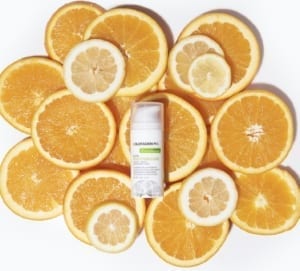Hyper-pigmentation is one of the most common complaints from women. Did you know that it is not only caused and activated by the sun but also by heat? This alarming truth is one of the reasons hyper-pigmentation and dark spots are so stubborn and challenging to get rid of.
So what actually happens?
Patches of skin become darker in color due to excessive melanin, the pigment that produces skin color. Types of hyperpigmentation include sunspots, which result from cumulative sun exposure; melasma, which arises primarily in women due to hormonal causes; and post-inflammatory hyperpigmentation, which arises from an injury or insult to the skin. While these conditions are conventionally treated with toxic topical agents such as hydroquinone, natural agents may also be helpful in managing them.
“Plant-derived agents such as alpha arbutin, kojic acid and birds of paradise have been found to be beneficial in lightening the appearance of the skin and evening its coloration,” says Dr. G!
Heat is also a culprit! Heat whether outside or inside increases vasodilation, which is the dilation or widening of blood vessels. This causes more redness to appear, particularly in areas of melasma. Heat can also lead to inflammation and stimulate melanocyte pigment production. While UV sources like the sun are defiantly enemy number one, there are many other triggers. Hyper-pigmentation can occur from heat sources like overhead LED lights, a BBQ grill, a hairdryer or the temperature in a hot yoga class. Wearing an SPF daily along with an environmental anti-pollution serum and dark spot corrective treatment will help combat many of these.
How to properly protect and treat:
The Best Thing You Can Do For Your Skin: The process of exfoliation is a lot like peeling away the dry, outer skin of an onion to reveal the living layers beneath. Whether the exfoliation is done using mechanical abrasion or a controlled chemical reaction, removing dead and damaged skin cells on the surface allows the fresh new skin underneath to become visible. This newly exposed layer of skin feels much softer and smoother. Its surface reflects light better, making fine lines and other small imperfections harder to see. Age spots and other areas of unwanted pigmentation are less noticeable because the dead skin cells containing the pigment have been removed. Exfoliation unplugs clogged pores and allows for the release of natural skin oils. Regular exfoliation also helps to maintain open pores, decreases pore size, and minimizes many types of superficial scarring. In addition, removing the top layer of dead and damaged cells allows other health-promoting agents such as moisturizers, antioxidants, and collagen-boosting ingredients to better penetrate the skin and work more effectively.
As a bodyguard:
Not only does your skin shield your insides from ultraviolet radiation and other forms of physical damage, it also carries a powerful defense system that seeks out and destroys any foreign invaders that manage to get through. When you consider that every square inch of your skin can be covered with millions of micro-organisms, you can understand how vital this is.
Look at your skin as “in defense” during the day. Integrate antioxidants into your AM regimen.
The nutrient, antioxidant and anti-inflammatory properties of the polyphenols found in antioxidants that span across tea, fruit, plant derivatives, have been scientifically proven to combat the effects of photo-aging. Cumulative exposure to the ultraviolet rays of the sun produces free radicals that can damage the sensitive lipids, proteins and DNA in your skin cells. This UV-induced damage to your skin can result in gradual loss of tone, wrinkling, discoloration, increased redness, and even cancer. Topical treatment with antioxidants has been shown to help prevent the DNA damage that leads to skin cancer and to support the general health and long-lasting beauty of your skin.
Dr. Goldfaden’s advanced brightening and antioxidant serum help aid against the appearance of photoaging and free radical damage while leaving skin feeling hydrated and looking radiant. Stay protected.

![]()
Don’t forget SPF. Here are some of our clean favorites from Credo Beauty.


